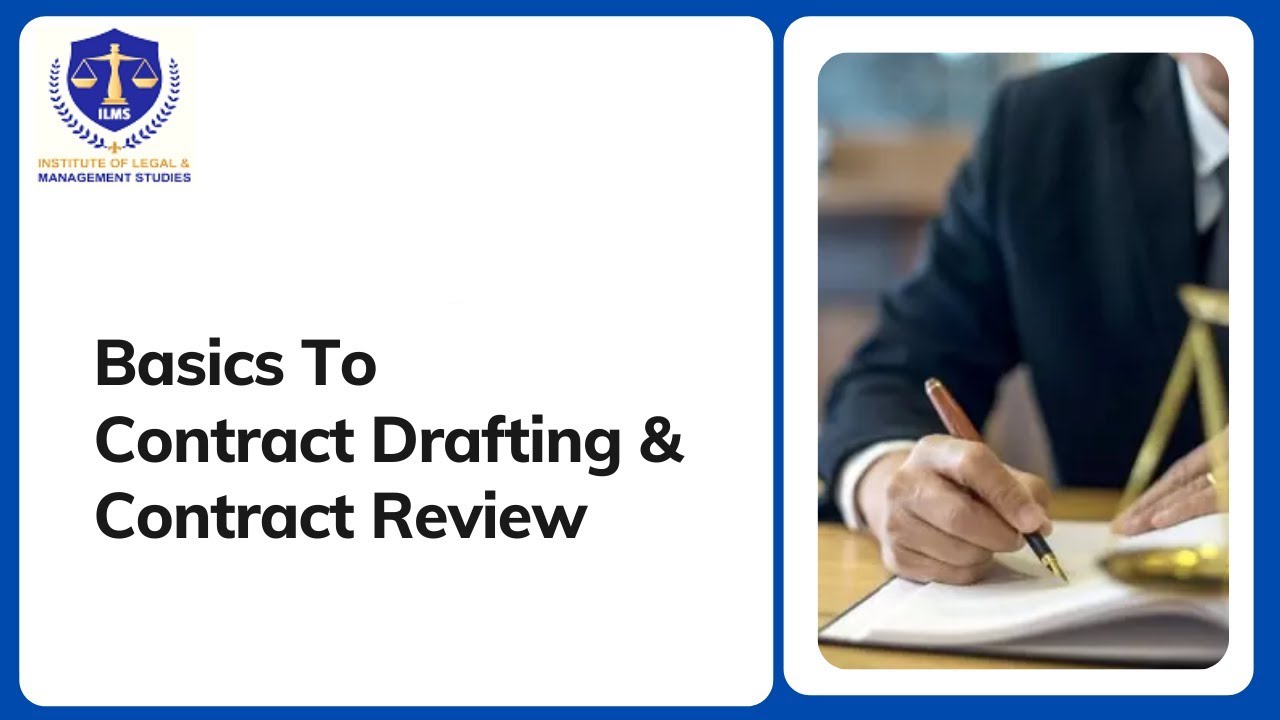Contract drafting and review are essential skills for legal professionals, business owners, and anyone involved in transactions requiring formal agreements. A well-drafted contract ensures the rights and obligations of the parties are clearly defined, minimizing the potential for disputes and misunderstandings. This article will provide an overview of the basics of contract drafting and contract review, discussing key principles, essential elements, and best practices.
1. Understanding Contract Basics
A contract is a legally binding agreement between two or more parties, outlining their rights and obligations. Contracts can be written or oral, though written contracts are generally easier to enforce. For a contract to be valid, it must meet the following criteria:
a. Offer and Acceptance: One party (the offeror) makes an offer, and the other party (the offeree) accepts it.
b. Consideration: Each party exchanges something of value (e.g., money, goods, services). c. Intention to Create Legal Relations: The parties intend for the agreement to be legally binding. d. Capacity: The parties have the legal capacity to enter into a contract (e.g., they are of legal age, mentally competent). e. Legality: The contract’s purpose and terms must be legal.
2. Key Principles of Contract Drafting
To draft an effective contract, consider the following key principles:
a. Clarity: Use clear, concise language that accurately reflects the parties’ intentions. Avoid jargon, legalese, and ambiguity.
b. Completeness: Ensure the contract covers all relevant aspects of the agreement, including rights, obligations, and contingencies.
c. Consistency: Maintain consistency in language, formatting, and structure throughout the document.
d. Precision: Be precise when defining terms, conditions, and timelines, minimizing the potential for disputes.
e. Enforceability: Draft the contract to be legally enforceable, ensuring it meets all legal requirements.
3. Essential Elements of a Contract
A well-drafted contract typically includes the following elements: a. Title and Preamble: The title should indicate the contract’s purpose, while the preamble sets the context and identifies the parties.
b. Definitions: Clearly define any terms or phrases used throughout the contract. c. Recitals: Provide background information and explain the reasons for the agreement.
- Certificate Course in Labour Laws
- Certificate Course in Drafting of Pleadings
- Certificate Programme in Train The Trainer (TTT) PoSH
- Certificate course in Contract Drafting
- Certificate Course in HRM (Human Resource Management)
- Online Certificate course on RTI (English/हिंदी)
- Guide to setup Startup in India
- HR Analytics Certification Course
d. Operative Clauses: Detail the parties’ rights, obligations, and responsibilities, using numbered or lettered headings for easy reference.
e. Representations and Warranties: Describe any statements or assurances made by the parties that influenced the agreement.
f. Conditions Precedent: Outline any conditions that must be satisfied before the contract becomes binding.
g. Termination Clauses: Specify the circumstances under which the contract may be terminated and the consequences of termination.
h. Dispute Resolution: Establish the process for resolving disputes, such as negotiation, mediation, arbitration, or litigation.
i. Governing Law and Jurisdiction: State the applicable law and jurisdiction for interpreting and enforcing the contract.
j. Miscellaneous Clauses: Include any additional provisions, such as force majeure, confidentiality, or indemnification.
k. Execution: Provide spaces for the parties to sign and date the contract, indicating their acceptance of the terms.
4. Best Practices for Contract Drafting
Implement these best practices to ensure a well-drafted contract:
a. Use templates and precedents: Start with a reliable template or precedent to save time and ensure consistency.
b. Customize the contract: Tailor the template or precedent to the specific transaction, considering the parties’ unique needs and circumstances.
c. Use plain language: Write in simple, straightforward language that is easily understood by all parties.
d. Organize the document: Use headings, subheadings, and numbered or bulleted lists to make the contract easy to read and navigate.
e. Proofread and edit: Carefully review the contract for errors, inconsistencies, or ambiguities, and make any necessary revisions.
5. Contract Review Process
Contract review is the process of examining a drafted contract to ensure its accuracy, completeness, and compliance with applicable laws and regulations. Here are some key steps in the contract review process:
a. Read the entire contract: Read through the entire document to gain a comprehensive understanding of the agreement.
b. Verify the parties and their details: Ensure that the parties are correctly identified, and their contact information is accurate.
c. Check for inconsistencies: Look for any inconsistencies or discrepancies between the contract’s provisions and the parties’ intentions or understanding.
d. Confirm compliance with laws and regulations: Make sure the contract complies with all applicable laws and regulations, including any industry-specific requirements.
e. Review the operative clauses: Examine the operative clauses to ensure they accurately represent the parties’ rights, obligations, and responsibilities.
f. Assess the termination and dispute resolution provisions: Review the termination and dispute resolution provisions to ensure they are fair, reasonable, and clearly defined.
g. Examine boilerplate clauses: Review the miscellaneous or boilerplate clauses, such as force majeure, confidentiality, and indemnification, to ensure they are appropriate and relevant to the agreement.
Conclusion
Drafting and reviewing contracts are crucial skills for anyone involved in formal agreements. By understanding the basics of contract drafting and contract review, you can create clear, comprehensive, and enforceable contracts that protect the interests of all parties. Always consider consulting with a legal professional for guidance and assistance in drafting and reviewing contracts to ensure their validity and enforceability.
- Certificate Course in Labour Laws
- Certificate Course in Drafting of Pleadings
- Certificate Programme in Train The Trainer (TTT) PoSH
- Certificate course in Contract Drafting
- Certificate Course in HRM (Human Resource Management)
- Online Certificate course on RTI (English/हिंदी)
- Guide to setup Startup in India
- HR Analytics Certification Course

